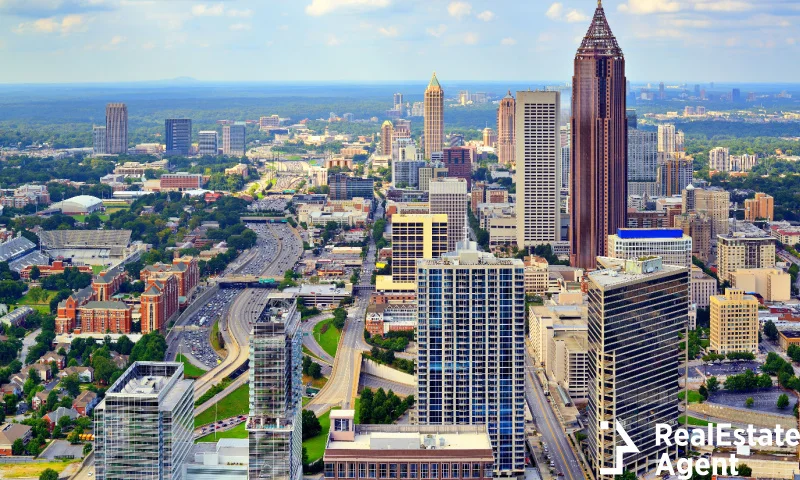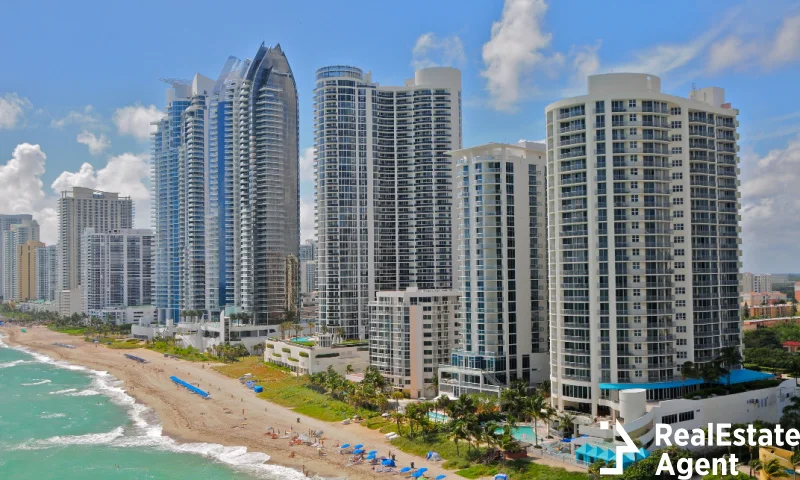Wherever you live in the U.S. or wherever you intend to move to, there is a constant change happening all around the country. Economical growth or new tech hubs that develop in certain areas have an impact on population growth. Some cities may lose at this game and see their population decreasing, while their metropolitan areas may experience an increase in population. Some of the fastest-growing cities in the U.S. may come from some states with the smallest increase in population. This happens because of urbanization, gentrification as well as several other factors.
When you look at the fastest-growing cities in the U.S. you might also see that some cities near-by experience a decrease in population. This is quite the opposite of what used to happen in the past when the population increase for one city would make the surrounding cities also grow in population. Today, the effect is reversed because of the factors that make the population grow. In the past, population growth meant railroads and trade cities or farms. All of those needed available land. Now, population growth means a great job market, tech hubs and not necessarily land.
Today’s way of life makes it possible for a lot of people to live in more confined spaces. Population density increased very much since the start of the nation when the settlers first came here. Now we have skyscrapers at every corner in large cities and less land for single-family homes, but that’s how development worked.
Summary:
- Fastest-Growing States in the U.S.
- Population growth since 2010
- Population growth since 2019
- Fastest-Growing Metro Areas in the U.S.
- The following fastest-growing metro cities in the U.S. are
- Fastest-Growing Cities in the U.S.
- Fastest-growing cities in Texas
- Fastest Growing Cities In California
- Fastest-growing cities from 2010 census to 2020
- Fastest growing cities since 2018
Fastest-Growing States in the U.S.

Overall, the U.S. experienced a growth of 6.57% since the 2010 census with some states going through a decrease of the population while others had a population growth of almost 20%. Things aren’t the same everywhere and it’s one of the factors people generally look into when thinking of relocating for a job. You want the area where you move to have a good economy, good housing prices and a low unemployment rate.
The population growth from the beginning of 2019 till now has been approximately 1.04% with some states losing population while others had an increase as big as 4%.
Population growth since 2010
Out of all the fastest-growing states in the U.S. by population since the 2010 census, the fastest-growing has been Utah with a percentage of 18.26%. Washington D.C. had an even bigger increase of 19.11% in the last ten years, but seeing as it’s not, technically a state, we won’t praise it here.
While in the recent past, Utah’s population growth was influenced primarily by natural growth through births, recently, Utah has experienced a change in demographic trends. Net-migration, people relocating to another state, is a phenomenon influenced by economic well-being. This fluctuates and the only way in which a state can ensure stability in this area is through a sustainable economy. When the economy is growing in a sustainable way (houses being built, infrastructure being developed, the educational system improved) we can see net migration. This has been the biggest influencer to the population growth experienced in Utah over the last ten years as one of the fastest-growing states in the U.S. From 2,775,000 residents to 3,282,000 residents in ten years’ time, Utah is the fastest-growing state in the U.S.
In the second place, we have Texas, which coincidentally is also the second-largest state in regards to population. Since the 2010 census, Texas’ population increased by 16.76%. With many of the fastest-growing cities in Texas that we’ll talk about a bit later, the state has had quite a history with growing populations. In recent history, if we only look at the last four decades, its population doubled from 14,229,000 in 1980 to 29,472,000 in 2020. There is no knowing where Texas’ population will get to, because it’s not far from California’s population but has a much higher growth rate.
Population growth since 2019
Over the last year, Idaho has been the fastest-growing state in the U.S. experiencing the biggest growth with 4.10%, reaching 1,826,000. With natural growth providing for 110K newborn residents as well as 47.54% of its population being Idaho-born, the population of the state also grew because of net migration.
In second place we have Utah that is the second-fastest-growing state in the U.S. over the last year with a 3.83% population growth since 2019. Currently, at 3,282,000, Utah has many areas to grow as vast expanses of land in the state are uninhabited. While being the 13th largest state in regard to land coverage, it is one of the most sparsely occupied states.
Fastest-Growing Metro Areas in the U.S.

Metropolitan areas are most often influencing their population growth through economic development. It is certainly the case with the ones we will mention as they are invaded by young professionals moving there for great job opportunities.
At the top of the fastest-growing metro areas in the U.S., we have Austin – Round Rock, TX with an overwhelming influx of residents. Austin – Round Rock, TX grew by 26.34% since the 2010 Census. Building sites can be seen through downtown Austin as skyscrapers are taking over the landscape. In March 2019, Austin – Round Rock, TX was considered the third fastest-growing region by 24/7 Wall Street but since then the now fastest-growing metro area in the U.S. managed to attract a record number of new residents. If the capital of the Lone Star State looks appealing to you get in touch with the real estate agents in Austin, TX.
In second place we have Orlando-Kissimmee-Sanford, FL. Experiencing a population growth of 20.55% since the 2010 Census, Orlando-Kissimmee-Sanford, FL also went through a decrease in unemployment rates over the last few years. The area now has a 2.8% unemployment rate which is significantly lower than the U.S. average. Job growth influenced the net migration in Orlando’s area and after years of leading the nation in job growth percentages, the results made it become one of the fastest-growing metro areas in the U.S. If you want to live in a place with more than a dozen theme parks, look into realtors in Orlando, FL for input.
The following fastest-growing metro cities in the U.S. are:
3.Raleigh, NC 20.53%
4.Charleston-North Charleston, SC 18.51%
5.Houston-The Woodlands-Sugar Land, TX 18.19%
6.San Antonio-New Braunfels, TX 17.53%
7.Dallas-Fort Worth-Arlington, TX 17.33%
8.North Port-Sarasota-Bradenton, FL 16.99%
9.Charlotte-Concord-Gastonia, NC-SC 15.89%
10.Phoenix-Mesa-Scottsdale, AZ 15.86%
With 4 out of the top ten growing metro areas being from Texas, we will see several cities in Texas make an appearance in the top of fastest-growing cities in the U.S.
Fastest-Growing Cities in the U.S.

Suburbs and large cities alike have experienced a large population growth in the last few years. Considering both the 2010 census as well as the most recent growth spurts, these cities kept the growing trend going as it dropped significantly throughout the nation.
At the top of the fastest-growing cities in the U.S., we have Apex, NC that had a population increase of 8% in the last year. Also known as the peak of good living and ranked as the best place to live by Money Magazine, Apex is a city with 11 miles of greenway, many festivals, a historic Downtown, and is one of the safest 100 cities in America. Real estate agents in Apex, NC would find no struggle in accommodating you and your family here.
Fastest-growing cities in Texas
Texas has been growing through several tech hubs and entertainment centers that attracted young professionals with their families. Among the 10 fastest-growing cities over the last 10 years, we have 6 Texan cities. Over the last couple of years, some cities from Texas managed to remain at the top.
The city of Frisco’s, TX had the largest growth since the 2010 census. With an increase of 60.6%, the population of Frisco increased from 103,000 to 188,000 and it’s at the top of the list because of it. Frisco is also the second fastest-growing city in the U.S. since 2019 with a population increase of 6.1% and an employment growth of 6.88%. This lovely suburb of Dallas is a sports hub with a corporate presence that attracts residents from all over the U.S. Real estate agents in Frisco, TX can offer a large variety of single-family homes in gated communities around this lovely suburb.
In second place we have McKinney, TX with a population of 46.2% since the 2010 census. Going from 119,000 to 192,000 in 10 years is quite impressive as well as the 5.4% population growth since 2019. The exponential employment growth is another factor that people take into account when migrating to another state or city and with 5.48% McKinney attracts young talent and families. Get in touch with local realtors in McKinney, TX if you’re looking to relocate to a city that has it all.
Fastest Growing Cities In California

While many people like moving to those cities with spark and glam like Los Angeles or San Diego, others might prefer the small-town life which can be a better fit for families. Many cities in California have experienced a growth spurt over the last decade and we’ll try to see why.
Dublin, CA had a 38.7% growth since 2010 exceeding 63,000 residents. The suburb of Oakland is one of the best places to live in California and the recent influx of population by 4.5% as well as the employment growth of 6.05% attracts more people every day. With an excellent school system and a vibrant community, Dublin is every young family’s dream.
Irvine, CA has managed a population growth of 33.3% since 2010. With a mix of a suburban and urban feel, most residents rent their homes. Currently, over 283,000 residents call Irvine their home, and with the safety it provides, it’s not surprising.
Fastest-growing cities from 2010 census to 2020
- Frisco, TX by 60.6% from 103,000 to 188,000;
- Sugar Land, TX by 55.3% from 76,000 to 119,000;
- Mckinney, TX by 46.2% from 119,000 to 192,000;
- Kent, WA by 43.2% from 89,000 to 130,000;
- Pearland, TX by 42.4% from 83,000 to 130,000;
- Irvine, CA by 33.3% from 199,000 to 283,000 ;
- New Orleans, LA by 32.0% from 295,000 to 391,000;
- League City, TX by 31.4% from 77,000 to 106,000;
- Round Rock, TX by 29.1% from 93,000 to 129,000;
- Surprise, AZ by 28.1% from 104,000 to 138,000.
Fastest growing cities since 2018
- Apex, NC – 8% population growth, 54,000 residents;
- Frico, TX – 6.1% population growth, 188,000 residents;
- Meridian, Idaho – 6.1% population growth, 107,000 residents;
- McKinney, TX – 5.4% population growth, 192,000 residents;
- Georgetown, TX – 5.2% population growth, 74,000 residents;
- Rowlett, TX – 5.1% population growth, 66,000 residents;
- St. Cloud, Florida – 5% population growth, 54,000 residents;
- Buckeye, Arizona – 5% population growth, 74,000 residents;
- Ankeny, Iowa – 4.6% population growth, 65,000 residents;
- Dublin, California – 4.5% population growth, 63,000 residents.
Conclusion
With Utah leading the fastest-growing states, the fastest-growing city from Utah only manages to get in on number 73 in the U.S. That might be because more cities from Utah managed a larger population increase since 2010 gathering more percentages as a state, but Salt Lake City managed growth of 1.15% in that period. When we have cities like Frisco with its 4.98% population growth things start to take another shape.
The state which provides the largest number of cities at the top of the fastest-growing cities in the U.S. is Texas. This doesn’t come as a surprise when you think of all the benefits Texas can offer and the economical growth experienced in most cities in the state. Real estate agents in Texas are kept pretty busy but the stability of the housing market in Texas is just one of the benefits, high income is another. With a stable job market, becoming a realtor in Texas has many perks.
California also manages a large number of the fastest-growing cities in the U.S. but did not make it into the top ten as a state. This is why the fastest-growing and most proficient state in the U.S. because of its cities is Texas, The Lone Star State with its lack of state income tax and tech hubs.
Every state or city has something special to offer which is why it’s so interesting to browse through them. You never know what you might find and even the smaller cities can sometimes seem more important than large metropolises.
Maybe you can let us know which state, metropolis or city caught your eye and we’re sure to find even more interesting facts about them. Like & Share with anyone who finds something interesting about U.S. cities every day.









Well written! Enjoyed the article. I love being a 6TH GENERATION TEXAN! It does scare me that Texas cities are growing so fast! Texas is a wonderful place and a state of mind. I just want the masses moving in to acquiesce to Texas; enjoy what Texas has to offer, and learn how to be Texas-proud. Enjoy the jobs and low state taxes but don’t try to change us, and don’t make fun of our accents.
Very well said, Suzanne! Indeed, Texas is growing fast and this is great news. It means that more people enjoy its communities and everything the state has to offer. The culture there is amazing and even the accents reflect its uniqueness. There is no laughing matter in it, only a proud reminder that Texas is part of our country.
Texas does not have a state tax. However, a crippling property tax more than makes up for lack of a state tax. In fact, property taxes are the single largest way that we pay for public services in the state.
I’m a native Arizonan, having grown up in Yuma, AZ. Yuma was about 14,000 people when I was a kid and now is around 100,000 and jumps considerably with winter visitors. I’ve lived in Phoenix for about 35 years and Phoenix is the 5th largest city and the 10th largest metro area, advancing to close to 6 million, when it was only about 1 million to 1 1/2 million back in the 1970s. Neither one of these places feel like “home” anymore, especially from the influx of people from California, the left coast, and other blue states. I say, do what you can to stem population growth. I realize how difficult that is when people are escaping the business and personal crap that other states are foisting on their people.